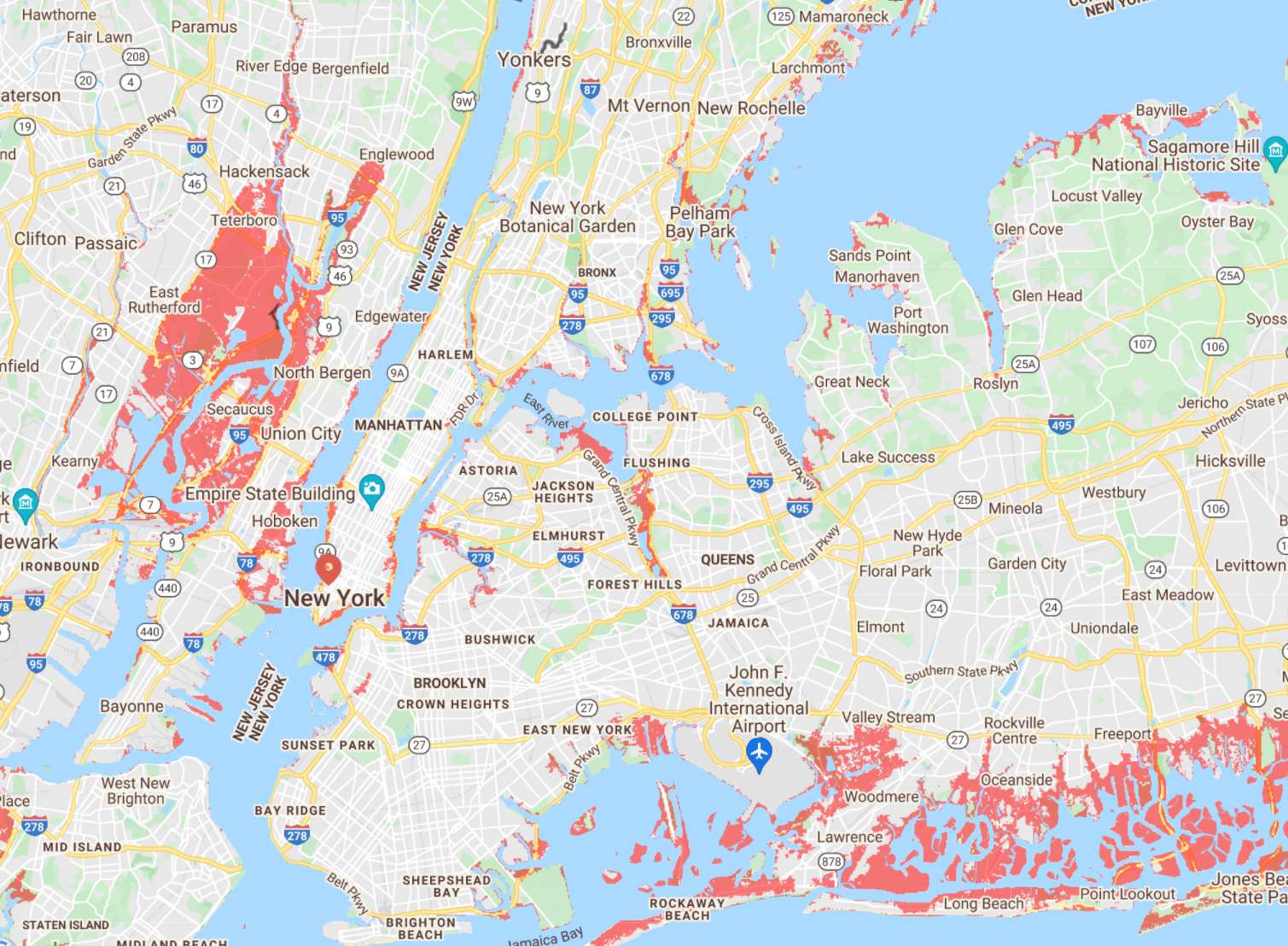New York flood risk: Map shows areas that could be regularly underwater by 2030
Coastal metropolis is already plagued by flooding
Your support helps us to tell the story
From reproductive rights to climate change to Big Tech, The Independent is on the ground when the story is developing. Whether it's investigating the financials of Elon Musk's pro-Trump PAC or producing our latest documentary, 'The A Word', which shines a light on the American women fighting for reproductive rights, we know how important it is to parse out the facts from the messaging.
At such a critical moment in US history, we need reporters on the ground. Your donation allows us to keep sending journalists to speak to both sides of the story.
The Independent is trusted by Americans across the entire political spectrum. And unlike many other quality news outlets, we choose not to lock Americans out of our reporting and analysis with paywalls. We believe quality journalism should be available to everyone, paid for by those who can afford it.
Your support makes all the difference.A map shows the areas of New York City that face regular flooding by 2030 as extreme weather becomes more common because of the climate crisis.
The startling image, created using a new NASA tool to visualise sea level rise in the coming decades, shows vast swathes of the city of 8.4 million, as well as neighbouring New Jersey, vulnerable to rising sea levels.

Last month Tropical Storm Elsa caused widespread flooding in New York and the surrounding area.
Videos posted to social media showed the impact of the downpours on apartment buildings, roadways, and the New York subway system. At the 157th Street station in Washington Heights in upper Manhattan, one woman could be seen plunging into the dark water to make her way to the train.
The US east coast was battered by extreme weather today as heavy thunderstorms brought flooding & travel disruption to New York City, while Tropical Storm Elsa dumped heavy rainfall & even sparked tornadoes in North Carolina & Georgia.#Elsa #flooding pic.twitter.com/euKARS7qQg
— ∼Marietta (@ThisIsMarietta) July 9, 2021
Experts pointed out that the century-old transit network was not designed for the impacts of an ever-worsening climate crisis. Even on dry days, the Metropolitan Transportation Authority is pumping out millions of gallons of water from the subway system.
NASA’s sea level projection tool was launched after the release of the Intergovernmental Panel on Climate Change’s (IPCC) first chapter from its sixth assessment report.
The tool, hosted on NASA’s Sea Level Portal, shows in detail how different parts of the world will be impacted by sea level rise under a range of emissions trajectories.
By selecting options from a drop-down menu, users can zoom into locations across the ocean and on every coastline between 2020 and 2150 to see what will happen depending on how rapidly the curve does – or doesn’t – bend on cutting emissions.
The tool also provides a look at different processes behind sea level rise like the melting of ice sheets and glaciers, and the extent to which ocean waters shift their circulation patterns or expand as they warm.
Sea levels have risen increasingly rapidly since about 1970 and in the past 100 years has risen more than in any century over at least the past three millennia. The global average sea level has risen at a rate of about four millimeters (0.16inches) per year over the last decade.
With nearly half of the global population living within 60 miles of the coast, the rise in sea levels is already impacting people in many parts of the world.

Join our commenting forum
Join thought-provoking conversations, follow other Independent readers and see their replies
Comments